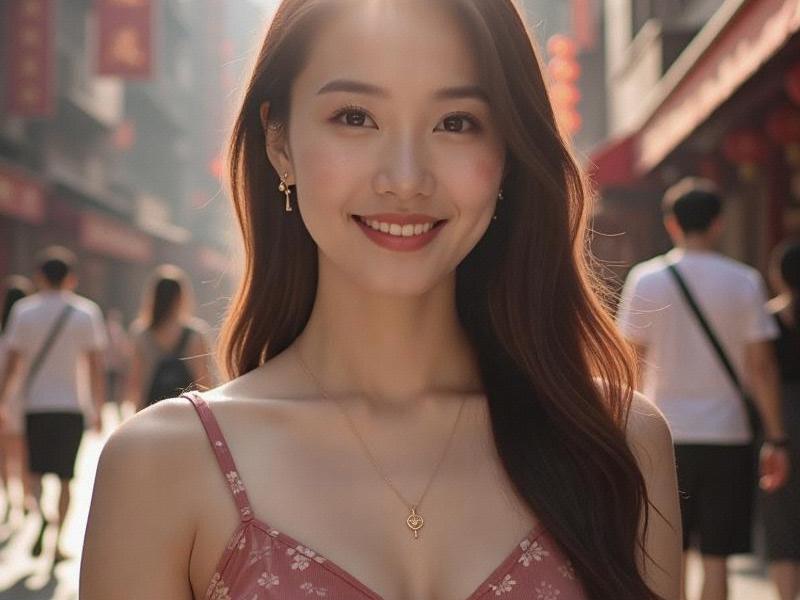This in-depth feature explores how Shanghai women have developed a distinctive urban identity that blends traditional Chinese values with global sophistication, creating a new paradigm of Asian femininity.

The Shanghai Woman: Redefining Modern Femininity in China's Global City
I. Historical Evolution of the Shanghai Woman Archetype
1. The Golden Era (1920s-1940s)
- Emergence of the "modern girl" (modeng xiaojie)
- Influence of foreign concessions on fashion
- Early female entrepreneurs and socialites
2. Socialist Transformation (1950s-1970s)
- Gender equality in workforce participation
- Simplified clothing and beauty standards
- Women in industrial production roles
3. Reform and Opening Up (1980s-present)
- Rebirth of fashion consciousness
- Educational and professional advancement
- New consumer culture and lifestyle
II. Defining Characteristics of Contemporary Shanghai Women
1. Educational Attainment
- 72% university enrollment rate among women
- Dominance in business and language fields
- Growing presence in STEM disciplines
2. Professional Achievement
- 42% of managerial positions held by women
- 58% of private business founders
- Average income 28% above national female average
3. Lifestyle and Consumption
爱上海最新论坛 - Average marriage age: 30.7 years
- ¥9,500 monthly discretionary spending
- 63% control household financial decisions
III. The Shanghai Aesthetic: Fashion and Beauty
1. Style Evolution
- Qipao revival with modern twists
- East-West fusion in daily wear
- Luxury brand consumption patterns
2. Beauty Industry Impact
- ¥48 billion cosmetics market
- 420+ international beauty brands
- 22% annual growth in premium segment
3. Cultural Signifiers
- Linguistic sophistication (Shanghainese dialect)
- Tea culture and social etiquette
- Arts and cultural patronage
IV. Economic Power and Influence
1. Consumer Behavior
- 68% of luxury purchases made by women
- 45% of automobile buyers
- 82% household purchasing decisions
2. Entrepreneurial Spirit
- 62,000 female-founded businesses
- 48 specialized incubators
爱上海同城419 - ¥15 billion in venture funding
3. Workforce Transformation
- 92% white-collar employment rate
- 38% representation in tech sector
- Growing presence in finance leadership
V. Global Context and Comparisons
1. Versus Hong Kong Women
- Stronger local cultural identity
- More balanced work-life approach
- Less Westernized lifestyle choices
2. Versus Tokyo Women
- Higher career ambition visibility
- Greater financial independence
- More diverse beauty standards
3. Versus New York Women
- Stronger family value orientation
- More conservative social norms
- Greater emphasis on education
VI. Challenges and Social Issues
1. Workplace Barriers
- 32% report gender discrimination
- Glass ceiling in certain industries
- Maternity leave challenges
419上海龙凤网 2. Demographic Pressures
- Elder care responsibilities
- Declining birthrate concerns
- Aging population impacts
3. Cultural Tensions
- Rural-urban migration effects
- Generation gap manifestations
- Western feminism adaptation
VII. Future Trends and Developments
1. Digital Influence Expansion
- Live-stream commerce leadership
- Social media entrepreneurship
- Virtual community building
2. Policy Advancements
- Enhanced anti-discrimination protections
- Childcare support systems
- Leadership development programs
3. Global Integration
- International education exchanges
- Cross-cultural marriage trends
- Overseas business expansion
Conclusion: The Shanghai Paradigm
Shanghai women represent a unique synthesis of Chinese tradition and global modernity, creating a feminine ideal that balances career ambition with cultural sophistication, financial independence with family values - a model that continues to evolve while maintaining its distinctive Shanghainese character.